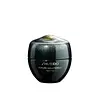What's inside
What's inside
 Key Ingredients
Key Ingredients

 Benefits
Benefits

 Concerns
Concerns

No concerns
 Ingredients Side-by-side
Ingredients Side-by-side

Avena Sativa Seed Water 77%
SolventButylene Glycol
HumectantGlycerin
Humectant2,3-Butanediol
Humectant1,2-Hexanediol
Skin ConditioningWater
Skin ConditioningAmmonium Acryloyldimethyltaurate/Vp Copolymer
Squalane
EmollientHydroxyacetophenone
AntioxidantCarbomer
Emulsion StabilisingDipotassium Glycyrrhizate
HumectantPanthenol
Skin ConditioningTromethamine
BufferingEthylhexylglycerin
Skin ConditioningInulin Lauryl Carbamate
Emulsion StabilisingSodium Surfactin
CleansingBeta-Glucan
Skin ConditioningAvena Sativa Seed Water 77%, Butylene Glycol, Glycerin, 2,3-Butanediol, 1,2-Hexanediol, Water, Ammonium Acryloyldimethyltaurate/Vp Copolymer, Squalane, Hydroxyacetophenone, Carbomer, Dipotassium Glycyrrhizate, Panthenol, Tromethamine, Ethylhexylglycerin, Inulin Lauryl Carbamate, Sodium Surfactin, Beta-Glucan
Water
Skin ConditioningDipropylene Glycol
HumectantButylene Glycol
HumectantGlycerin
HumectantXylitol
HumectantPiperidinepropionic Acid
Skin ConditioningPetrolatum
EmollientParaffinum Liquidum
EmollientDimethicone
EmollientTriethylhexanoin
MaskingMyristyl Myristate
EmollientDiphenylsiloxy Phenyl Trimethicone
Skin ConditioningBehenyl Alcohol
EmollientBeheneth-20
EmulsifyingStearyl Alcohol
EmollientDiisostearyl Malate
EmollientDipentaerythrityl Hexahydroxystearate
EmulsifyingPhytosteryl/Octyldodecyl Lauroyl Glutamate
Skin ConditioningPEG/PPG-17/4 Dimethyl Ether
Skin ConditioningCarnosine
Skin ConditioningTocopheryl Acetate
AntioxidantXanthan Gum
Emulsifying2-O-Ethyl Ascorbic Acid
Skin ConditioningIsodonis Japonicus Leaf/Stalk Extract
MaskingPrunus Speciosa Leaf Extract
Skin ConditioningIris Florentina Root Extract
MaskingSanguisorba Officinalis Root Extract
CleansingCamellia Sinensis Leaf Extract
AntimicrobialGlycyrrhiza Glabra Root Extract
BleachingHibiscus Esculentus Fruit Extract
Skin ConditioningAngelica Acutiloba Root Extract
Skin ConditioningChaenomeles Sinensis Fruit Extract
AntioxidantSodium Acetylated Hyaluronate
HumectantTremella Fuciformis Polysaccharide
Emulsion StabilisingHouttuynia Cordata Extract
Skin ConditioningRosmarinus Officinalis Leaf Extract
AntimicrobialBupleurum Falcatum Root Extract
Skin ConditioningPrunus Persica Leaf Extract
EmollientHydrolyzed Silk
HumectantMicrocrystalline Wax
Emulsion StabilisingBatyl Alcohol
EmollientGlyceryl Stearate Se
EmulsifyingSodium Acrylate/Sodium Acryloyldimethyl Taurate Copolymer
Emulsion StabilisingHydrogenated Palm Oil
EmollientIsohexadecane
EmollientElaeis Guineensis Kernel Oil
EmollientElaeis Guineensis Oil
EmollientSodium Citrate
BufferingPolysorbate 80
EmulsifyingSodium Methyl Stearoyl Taurate
CleansingBHT
AntioxidantTrisodium EDTA
Alcohol
AntimicrobialSodium Metabisulfite
AntioxidantCitric Acid
BufferingSorbitan Oleate
EmulsifyingLinalool
PerfumingLimonene
PerfumingSodium Metaphosphate
BufferingCitronellol
PerfumingGeraniol
PerfumingAlpha-Isomethyl Ionone
PerfumingBenzyl Benzoate
AntimicrobialTocopherol
AntioxidantPhenoxyethanol
PreservativeParfum
MaskingCI 77492
Cosmetic ColorantCI 77491
Cosmetic ColorantWater, Dipropylene Glycol, Butylene Glycol, Glycerin, Xylitol, Piperidinepropionic Acid, Petrolatum, Paraffinum Liquidum, Dimethicone, Triethylhexanoin, Myristyl Myristate, Diphenylsiloxy Phenyl Trimethicone, Behenyl Alcohol, Beheneth-20, Stearyl Alcohol, Diisostearyl Malate, Dipentaerythrityl Hexahydroxystearate, Phytosteryl/Octyldodecyl Lauroyl Glutamate, PEG/PPG-17/4 Dimethyl Ether, Carnosine, Tocopheryl Acetate, Xanthan Gum, 2-O-Ethyl Ascorbic Acid, Isodonis Japonicus Leaf/Stalk Extract, Prunus Speciosa Leaf Extract, Iris Florentina Root Extract, Sanguisorba Officinalis Root Extract, Camellia Sinensis Leaf Extract, Glycyrrhiza Glabra Root Extract, Hibiscus Esculentus Fruit Extract, Angelica Acutiloba Root Extract, Chaenomeles Sinensis Fruit Extract, Sodium Acetylated Hyaluronate, Tremella Fuciformis Polysaccharide, Houttuynia Cordata Extract, Rosmarinus Officinalis Leaf Extract, Bupleurum Falcatum Root Extract, Prunus Persica Leaf Extract, Hydrolyzed Silk, Microcrystalline Wax, Batyl Alcohol, Glyceryl Stearate Se, Sodium Acrylate/Sodium Acryloyldimethyl Taurate Copolymer, Hydrogenated Palm Oil, Isohexadecane, Elaeis Guineensis Kernel Oil, Elaeis Guineensis Oil, Sodium Citrate, Polysorbate 80, Sodium Methyl Stearoyl Taurate, BHT, Trisodium EDTA, Alcohol, Sodium Metabisulfite, Citric Acid, Sorbitan Oleate, Linalool, Limonene, Sodium Metaphosphate, Citronellol, Geraniol, Alpha-Isomethyl Ionone, Benzyl Benzoate, Tocopherol, Phenoxyethanol, Parfum, CI 77492, CI 77491
 Reviews
Reviews

Ingredients Explained
These ingredients are found in both products.
Ingredients higher up in an ingredient list are typically present in a larger amount.
Butylene Glycol (or BG) is used within cosmetic products for a few different reasons:
Overall, Butylene Glycol is a safe and well-rounded ingredient that works well with other ingredients.
Though this ingredient works well with most skin types, some people with sensitive skin may experience a reaction such as allergic rashes, closed comedones, or itchiness.
Learn more about Butylene GlycolGlycerin is already naturally found in your skin. It helps moisturize and protect your skin.
A study from 2016 found glycerin to be more effective as a humectant than AHAs and hyaluronic acid.
As a humectant, it helps the skin stay hydrated by pulling moisture to your skin. The low molecular weight of glycerin allows it to pull moisture into the deeper layers of your skin.
Hydrated skin improves your skin barrier; Your skin barrier helps protect against irritants and bacteria.
Glycerin has also been found to have antimicrobial and antiviral properties. Due to these properties, glycerin is often used in wound and burn treatments.
In cosmetics, glycerin is usually derived from plants such as soybean or palm. However, it can also be sourced from animals, such as tallow or animal fat.
This ingredient is organic, colorless, odorless, and non-toxic.
Glycerin is the name for this ingredient in American English. British English uses Glycerol/Glycerine.
Learn more about GlycerinWater. It's the most common cosmetic ingredient of all. You'll usually see it at the top of ingredient lists, meaning that it makes up the largest part of the product.
So why is it so popular? Water most often acts as a solvent - this means that it helps dissolve other ingredients into the formulation.
You'll also recognize water as that liquid we all need to stay alive. If you see this, drink a glass of water. Stay hydrated!
Learn more about Water